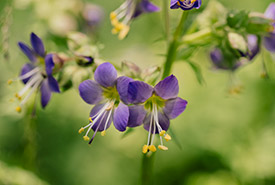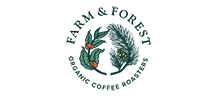Ham-Sud and Ham-Nord - Van Brunt's Jacob's-ladder domain

Van Brunt’s Jacob’s-ladder, QC (Photo by La Halte Studio)
Protected areas in the Estrie region benefit an endangered plant
With its upright stem that can reach heights of 140 centimetres, and its blue-mauve bell-shaped flowers and delicate, alternating leaves, Van Brunt's Jacob's-ladder is a real eye-catcher. This plant thrives in wetlands, such as riparian meadows, marshes and clearings, and evokes both a country and fairytale life.
But its beauty is matched only by its precariousness.
In fact, Van Brunt's Jacob's-ladder faces numerous threats, including residential development and infrastructure construction, as well as all-terrain vehicle traffic. Its situation is so critical that it has been designated threatened under Canada's Species at Risk Act and Quebec's Loi sur les espèces menacées ou vulnérables.
This species is also restricted in its range. New Brunswick, the central Appalachians and Centre-du-Québec are the only other known areas in Canada where populations remain.
Fortunately, 547 hectares of prime habitats in the Eastern Townships are protected for this plant! Thanks to generous donors and numerous partners, the Nature Conservancy Canada (NCC) is safeguarding 516 hectares of former forest land, located 48 kilometres northeast of Sherbrooke. The protected land lies within the traditional territory of the W8banaki Nation, known as the Ndakina. NCC thanks these original custodians, and acknowledges the ongoing work and presence of Indigenous Peoples in Canada. This conservation project adjoins two other natural areas: a 31-hectare parcel acquired by NCC a few years ago, which includes habitat for Van Brunt's Jacob's-ladder, and the Parc régional du Mont-Ham.
For this species to thrive, a number of conditions must be met. Van Brunt’s Jacob’s-ladder prefers open or semi-open wetlands, with soils rich in organic matter and with a specific moisture content. A delicate and distinctive species, it is highly sensitive to changes in its environment, particularly floods and droughts.
Fortunately, it will continue to flourish in the Eastern Townships, within quality habitat protecfed for today, and for tomorrow.
Did you know?
- Van Brunt's Jacob's-ladder blooms from late June to late July.
- It sometimes thrives in environments modified by human activity, such as abandoned fields and old logging roads.
- The Appalachians stretch from Alabama to Newfoundland and Labrador. The range of Van Brunt's Jacob's-ladder extends from West Virginia to southern Quebec and New Brunswick.
- Wetlands and forests help purify our water and air and are also important carbon sinks. Part of this site has been integrated into the Projet forestier Pivot, a project for the valuation and trading of high-quality credits due to carbon stored in forests. This partnership developed between NCC and ECOTIERRA embodies an innovative approach combining the preservation of biodiversity and the fight against climate change. This collaboration reflects the importance of cooperation between environmental organizations and companies committed to reducing their environmental footprint.
Acknowledgments
NCC thanks its financial partners in the acquisition of this land: the Government of Canada, through the Canada Nature Fund, and the Gouvernement du Québec, through financial aid of over $53 million over four years granted to NCC for its Projet de partenariat pour les milieux naturels. NCC also thanks Ecotierra for its partnership in the Projet forestier Pivot, as well as the Mont-Ham Regional Park and the MRC des Sources for their collaboration in protecting this land and the Quebec Ecological Corridors Initiative.












